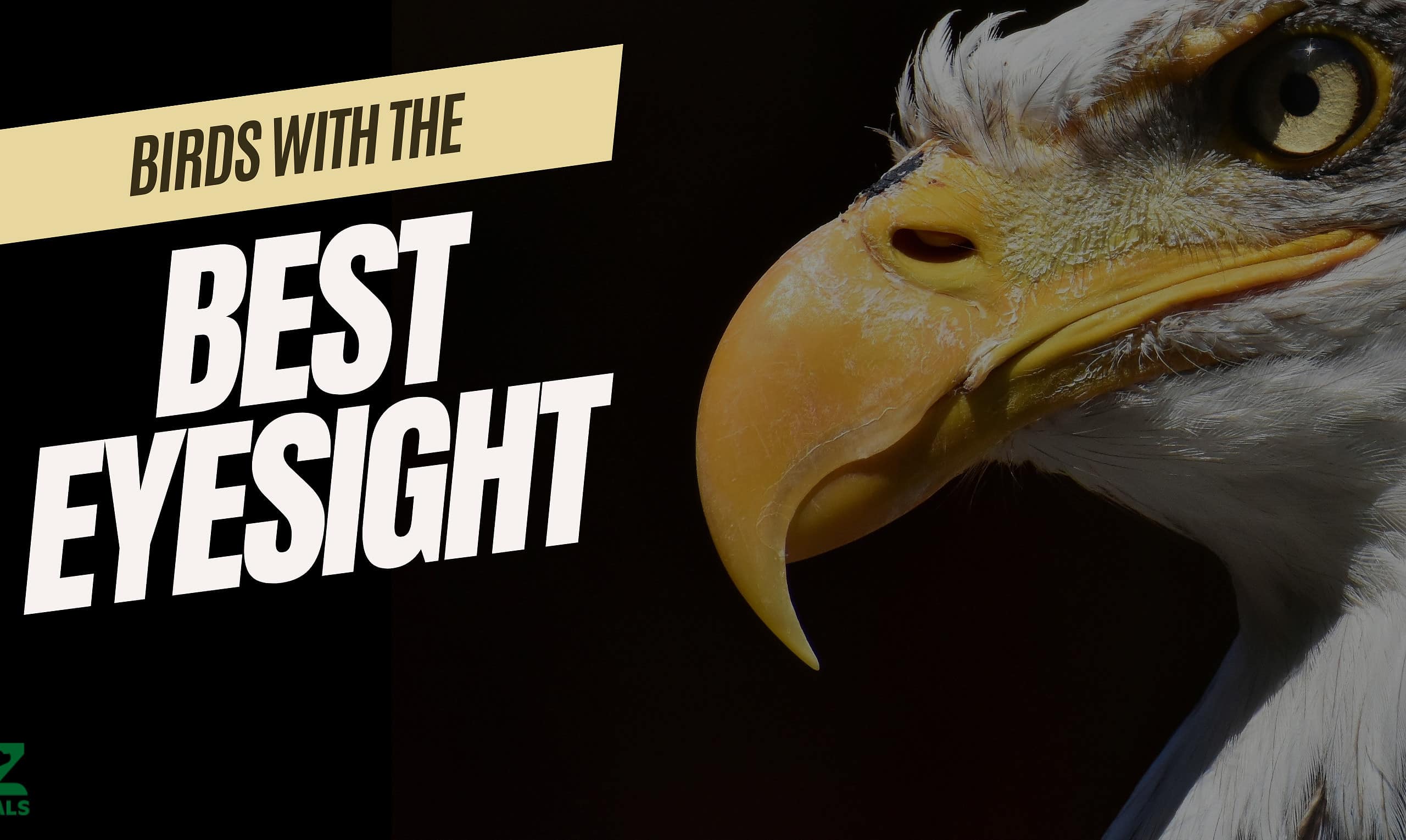“Eyes like a hawk” is just one of several sayings that are used to describe someone with exceptionally good eyesight. Many of these sayings are bird-related, so it’s not surprising to find that birds have particularly strong eyesight. Of course, not every bird has good eyesight, but there are definitely some that stand out. So, keep reading to discover the birds with the strongest eyesight in the world!
Tawny Owl
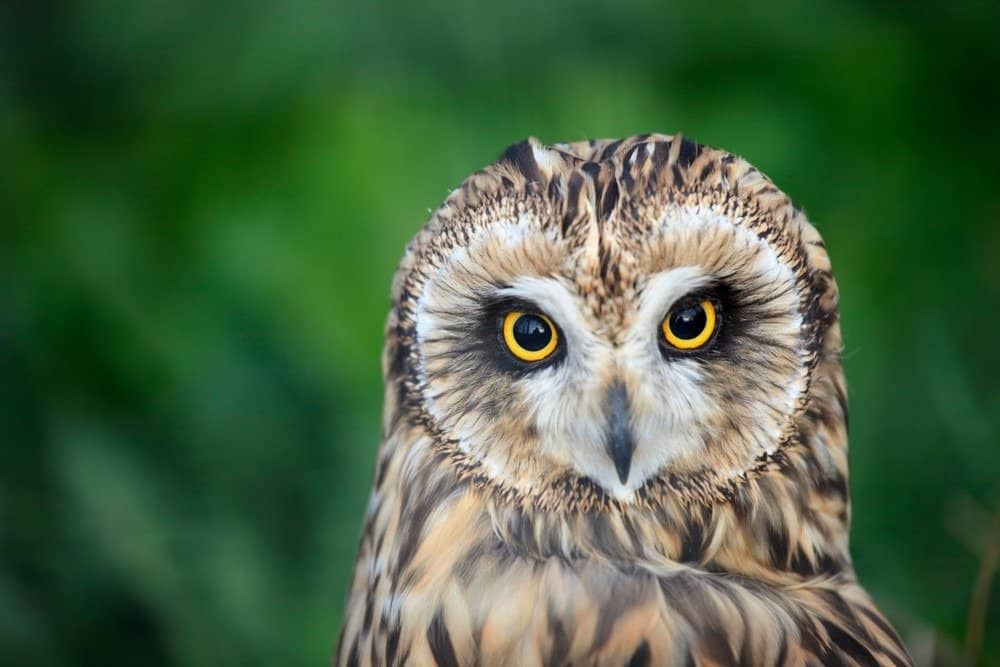
Tawny owls can spot prey from 1,650 feet away.
©Koroleva Yana/Shutterstock.com
Owls have binocular vision, and this means that they can see images in three dimensions. This, combined with the position of their eyes on the front of their face, means that they also have a wide range of vision.
Although all owls have good eyesight, tawny owls are well-known for their superior night vision. They have a high number of rod cells — around one million per square inch. Rod cells are photoreceptor cells that are extremely light-sensitive and help to produce good vision in low-light situations. Tawny owls have many more rod cells than us humans do and are typically considered as having vision that is up to 100 times better than our own.
As nocturnal animals, good night vision is essential for tawny owls. Tawny owls are able to detect prey that is up to 1,650 feet away. This, combined with their excellent hearing, means that they are highly accomplished night-time hunters. Tawny owls prey on a variety of small animals, such as mice, voles, and small birds.
Tawny Owl (Continued)

©Joanne Harris and Daniel Bubnich/Shutterstock.com
Although all owls have good eyesight, tawny owls are well-known for their superior night vision. They have a high number of rod cells — around one million per square inch. Rod cells are photoreceptor cells that are extremely light-sensitive and help to produce good vision in low-light situations. Tawny owls have many more rod cells than us humans do and are typically considered as having vision that is up to 100 times better than our own.
As nocturnal animals, good night vision is essential for tawny owls. Tawny owls are able to detect prey that is up to 1,650 feet away. This, combined with their excellent hearing, means that they are highly accomplished night-time hunters. Tawny owls prey on a variety of small animals, such as mice, voles, and small birds.
Harris Hawk
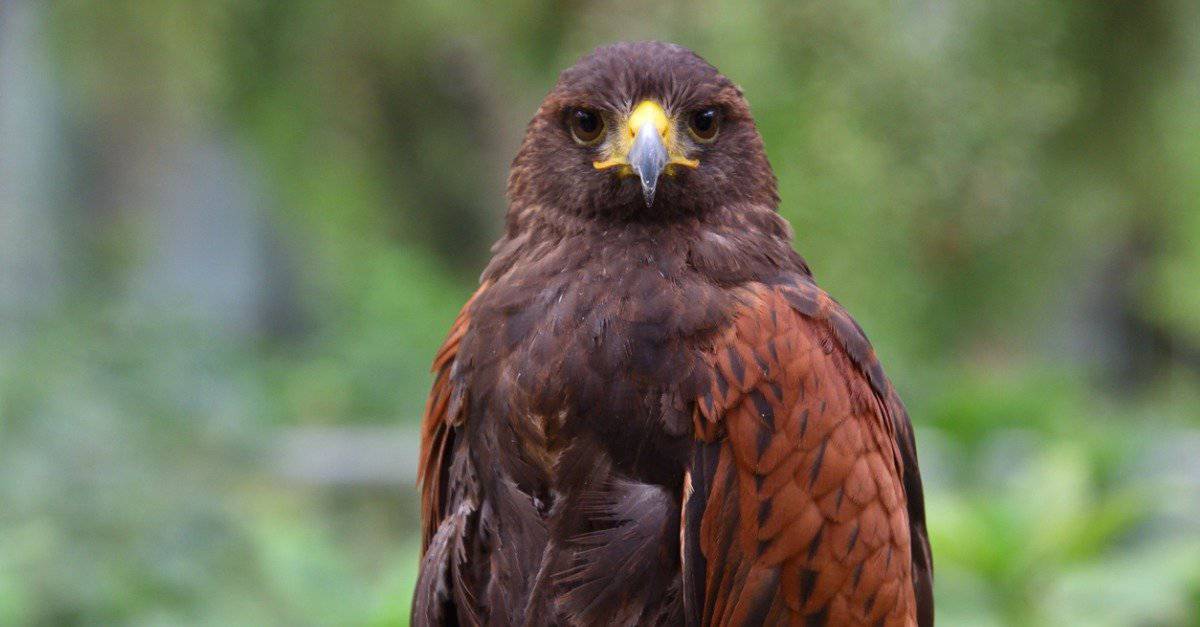
Harris hawks can see prey moving from around one mile away.
©iStock.com/Josiah S
Hawks are birds of prey that can be found right across the world, with species inhabiting every continent except Antarctica. All hawks have strong eyesight, but the Harris hawk, in particular, is hailed for its excellent color vision.
Harris Hawk (Continued)

©iStock.com/Josiah S
Like tawny owls, Harris hawks have binocular vision. However, instead of having a higher number of rod cells, hawks have a greater number of cones in their eyes. This allows them to see in color. Although they can still see in the dark, their eyesight is not as well developed as that of owls in this respect. However, Harris hawks are skilled hunters and can clearly see prey from around 100 feet away, but they are also able to detect movement from around a mile away.
American Woodcock

American woodcocks have a 360° field of vision due to the unique positioning of their eyes.
©iStock.com/Gerald Corsi
A bird with a particularly unusual appearance is the American woodcock because their eyes are located high up towards the back of their head. American woodcocks are relatively small birds at 10 to 12 inches long but have large eyes in relation to their size.
American Woodcock (Continued)
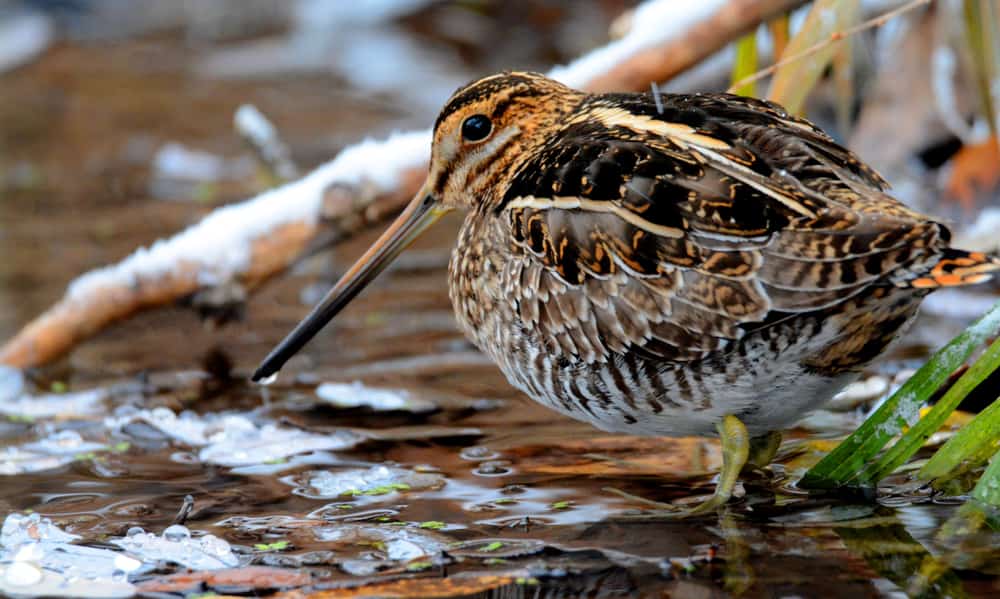
©Carrie Olson/Shutterstock.com
The position of their eyes means that they have an incredible field of vision. This is estimated to be 360° within the horizontal plane and 180° vertically. This means that they are able to watch for predators even while they have their heads down foraging for food. Incredibly, this unique characteristic is a sign of the evolutionary change of these birds. Woodcocks date back to the Pleistocene era, and they have developed this characteristic as a way to survive and avoid predators.
European Robin
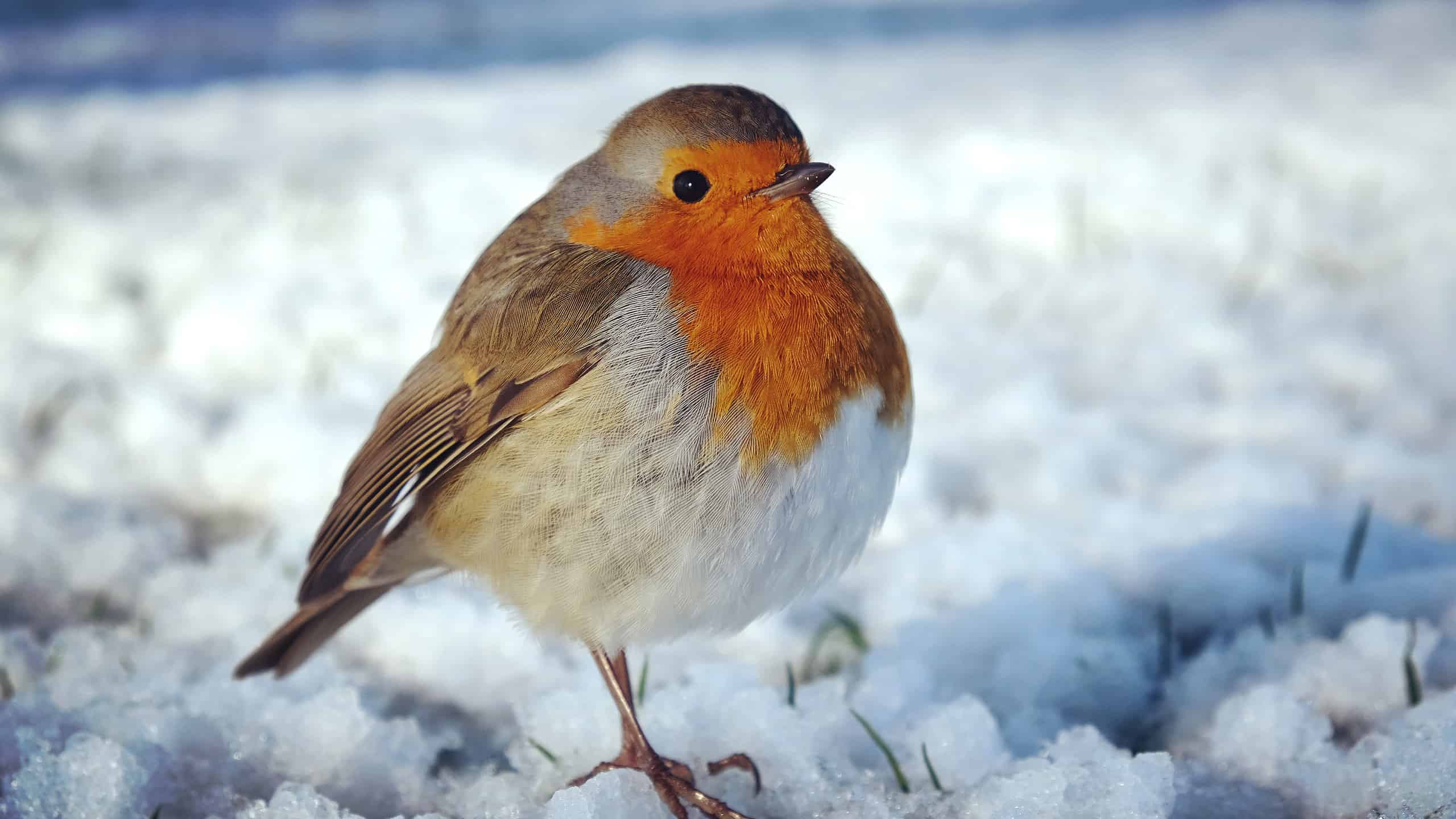
European robins are able to see magnetic fields which can help them with navigation.
©Alex Manders/Shutterstock.com
European Robin (Continued)

The magnetic field appears as a light or dark spot that is overlaid over the bird’s regular vision and is extremely useful for navigation while traveling long distances.
Peregrine Falcon
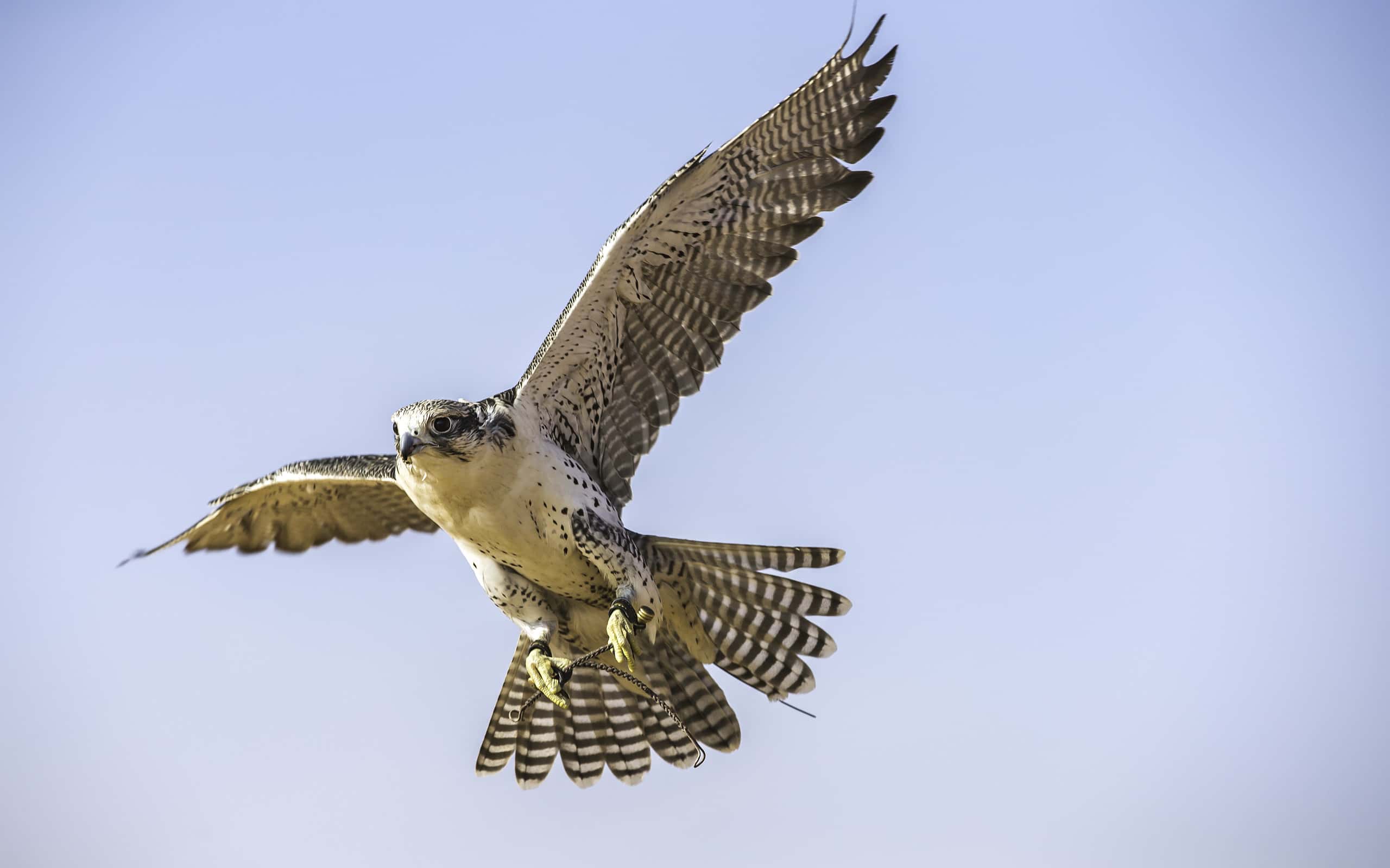
Peregrine falcons can accurately detect the location of prey from a distance.
©Katiekk2/iStock / Getty Images Plus via Getty Images
There are 63 species of falcons in the world and, like the other birds of prey on the list, they have superior eyesight. Good eyesight is essential for these birds as they need to be able to accurately detect small prey from a long distance away. Peregrine falcons, in particular, need to have good eyesight as they are the fastest animal in the world and can dive at speeds of up to 200 miles per hour. Luckily, they are able to see objects with incredible clarity even when traveling at these mighty speeds.
Peregrine Falcon (Continued)
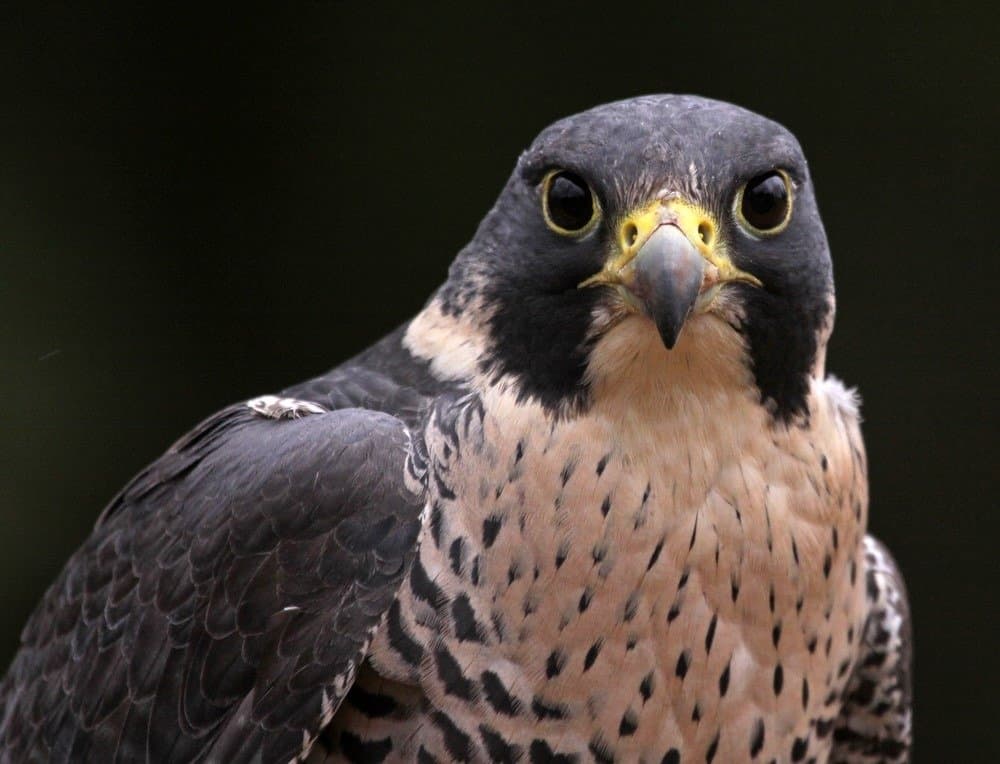
©Chris Hill/Shutterstock.com
Peregrine falcons have approximately one million cones in their eyes. This means that, like the Harris hawk, they can see color exceptionally well. However, they don’t possess as many rods, which means their nocturnal vision is not as good as that of owls, for example.
Great Blue Heron
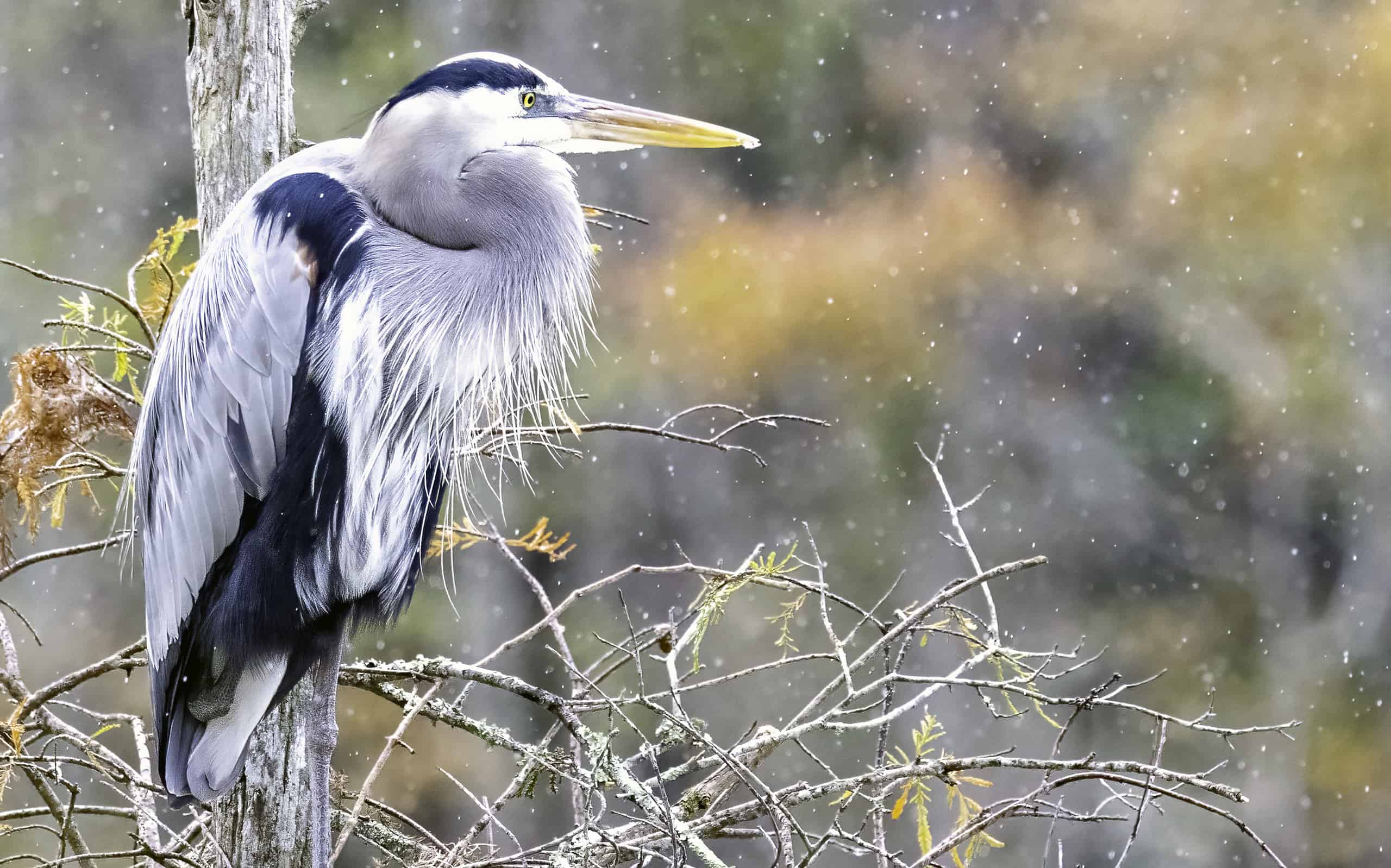
Great blue herons have eyesight that is three times better than humans.
©dangarneau/iStock via Getty Images
Also making the list of birds with the strongest eyesight is the great blue heron. Herons have powerful eyesight which is around three times stronger than our own, as well as incredible depth perception.
Great Blue Heron (Continued)
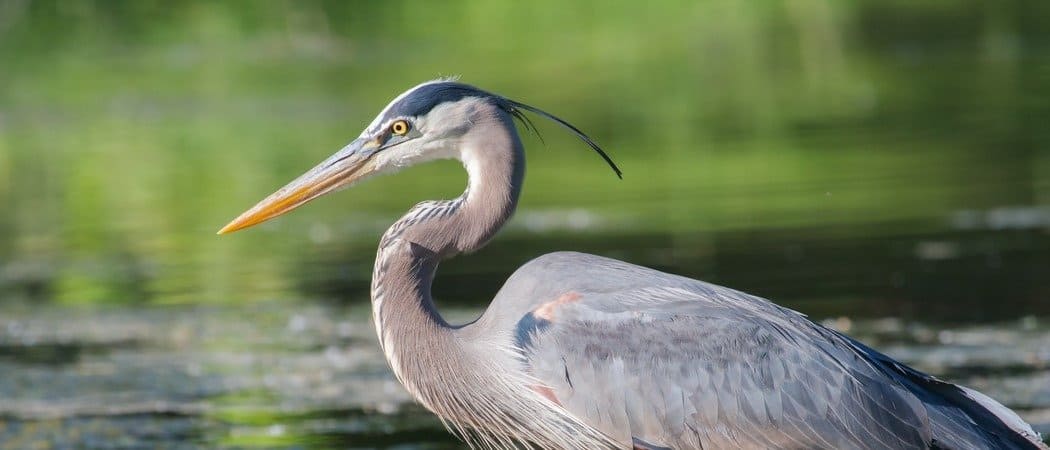
©Joseph Scott Photography/Shutterstock.com
Great blue herons primarily eat fish of sizes that vary from small to medium. As water birds that need to spot their prey and accurately grab it, herons rely on their eyesight to survive.
Herons manage to navigate the glare of the water by tilting their head. Incredibly, they are also able to zoom their vision in and out, which aids their depth perception.
Kingfisher

Kingfishers have binocular vision underwater and monocular vision while in the air.
©iStock.com/lensalot
The next bird on the list is the kingfisher, which is a brightly colored bird with a long bill. Kingfishers prey on a wide range of animals, including fish, which they catch by swooping down and snatching it up. Kingfishers have excellent eyesight, albeit their vision is not as good underwater as it is above the water. However, they actually have monocular vision while they are in the air as well as binocular vision while they are in the water. This helps them to detect moving prey much more easily.
Black Vulture
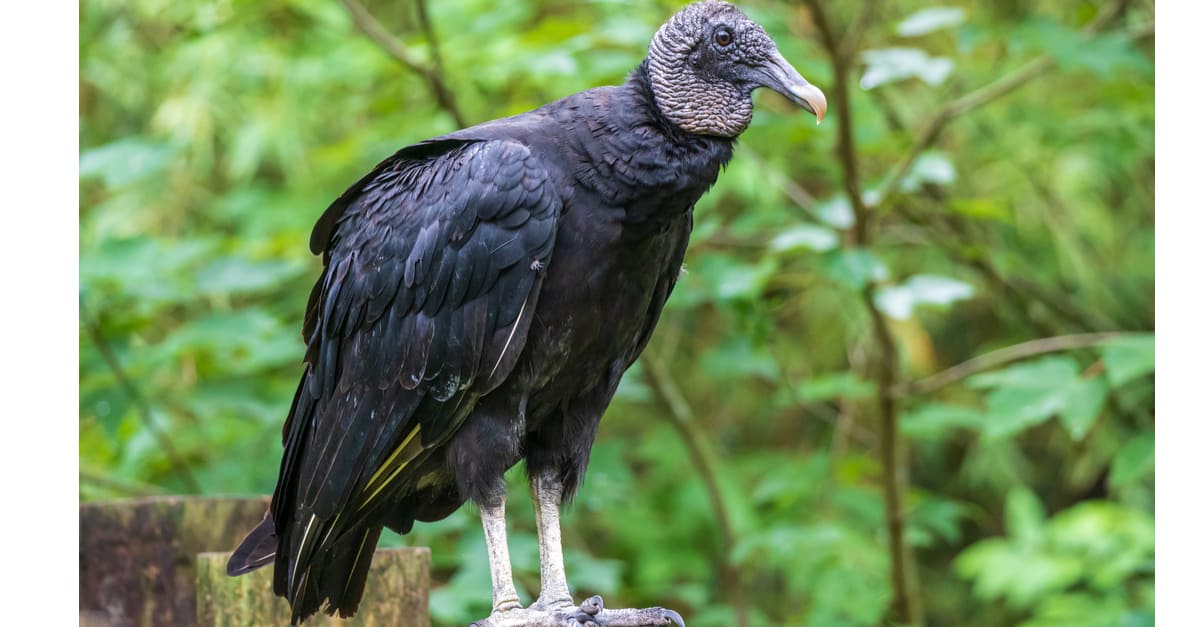
Black vultures can see prey from several miles away.
©Holly Guerrio/Shutterstock.com
There are 23 different species of vultures. These are divided into two categories — New World and Old World — depending on their location. Vultures are scavengers and primarily eat the carcasses of dead animals.
Although some vultures — such as the turkey vulture — also have a strong sense of smell, black vultures rely on their eyesight to locate their prey. While they sometimes follow vultures that have olfactory senses to carcasses, they primarily scan the surrounding area for their meal.
As a result, black vultures tend to live in open areas where there is very little tree cover. This is so they have a greater chance of spotting food. Black vultures have incredibly strong eyesight and can detect carcasses from as much as four miles away.
Broad-Tailed Hummingbird
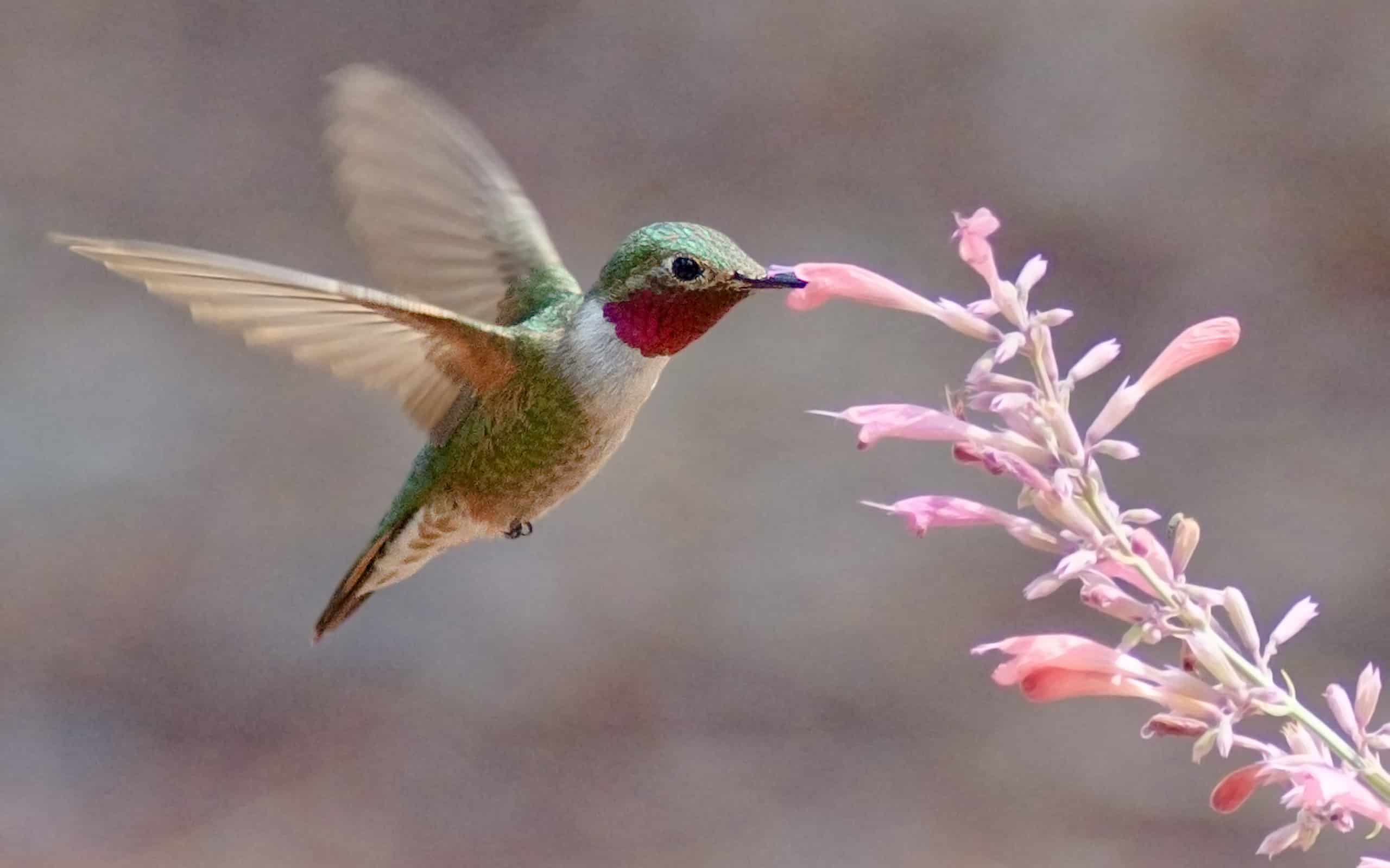
Broad-tailed hummingbirds have advanced eyesight that can see colors that are not typically visible to humans.
©M-C-C/iStock via Getty Images
Another bird that you might be surprised to see on the list is the broad-tailed hummingbird. However, hummingbirds can see a much broader range of colors than we can.
Broad-Tailed Hummingbird (Continued)

©Keneva Photography/Shutterstock.com
A study was conducted involving broad-tailed hummingbirds which found that they can see “non-spectral colors” which are colors that are not within the spectrum of visible light. This is because they have four different types of cones within their eyes (we only have three), and these allow them to see colors that are not usually visible.
Bald Eagle
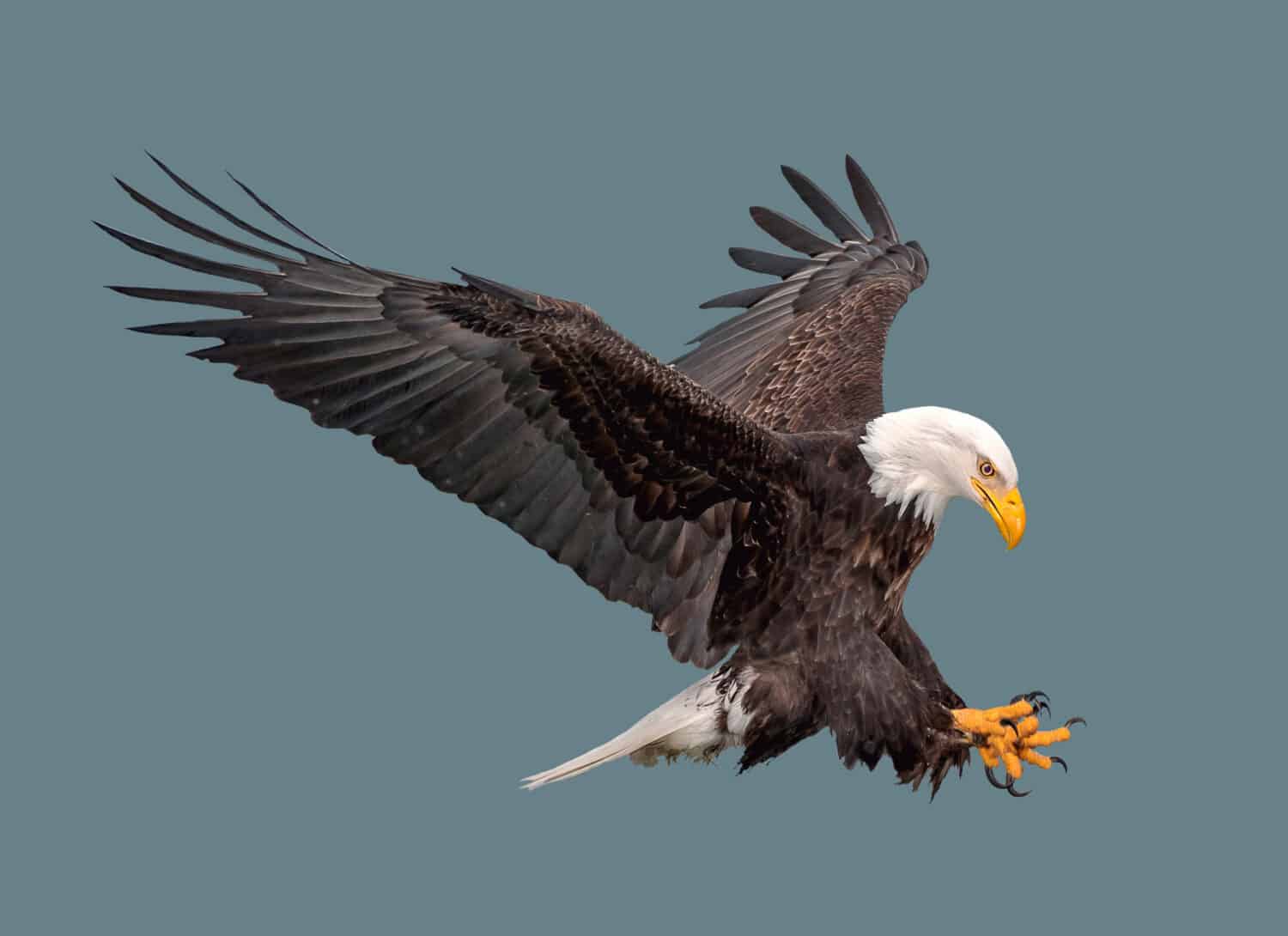
Bald eagles have the best long-distance vision.
©PHOTOOBJECT/Shutterstock.com
We’ve all heard the phrase “eagle eye”, so it’s no surprise that eagles are regarded as the birds with the best and strongest eyesight. Eagles, particularly bald eagles, are credited with having the best distance vision, and they can spot prey up to two miles away. They have 20/5 vision which means that, in comparison to our own eyes, bald eagles can see objects from 20 feet away that we are only able to see from a distance of five feet.
Bald Eagle (Continued)
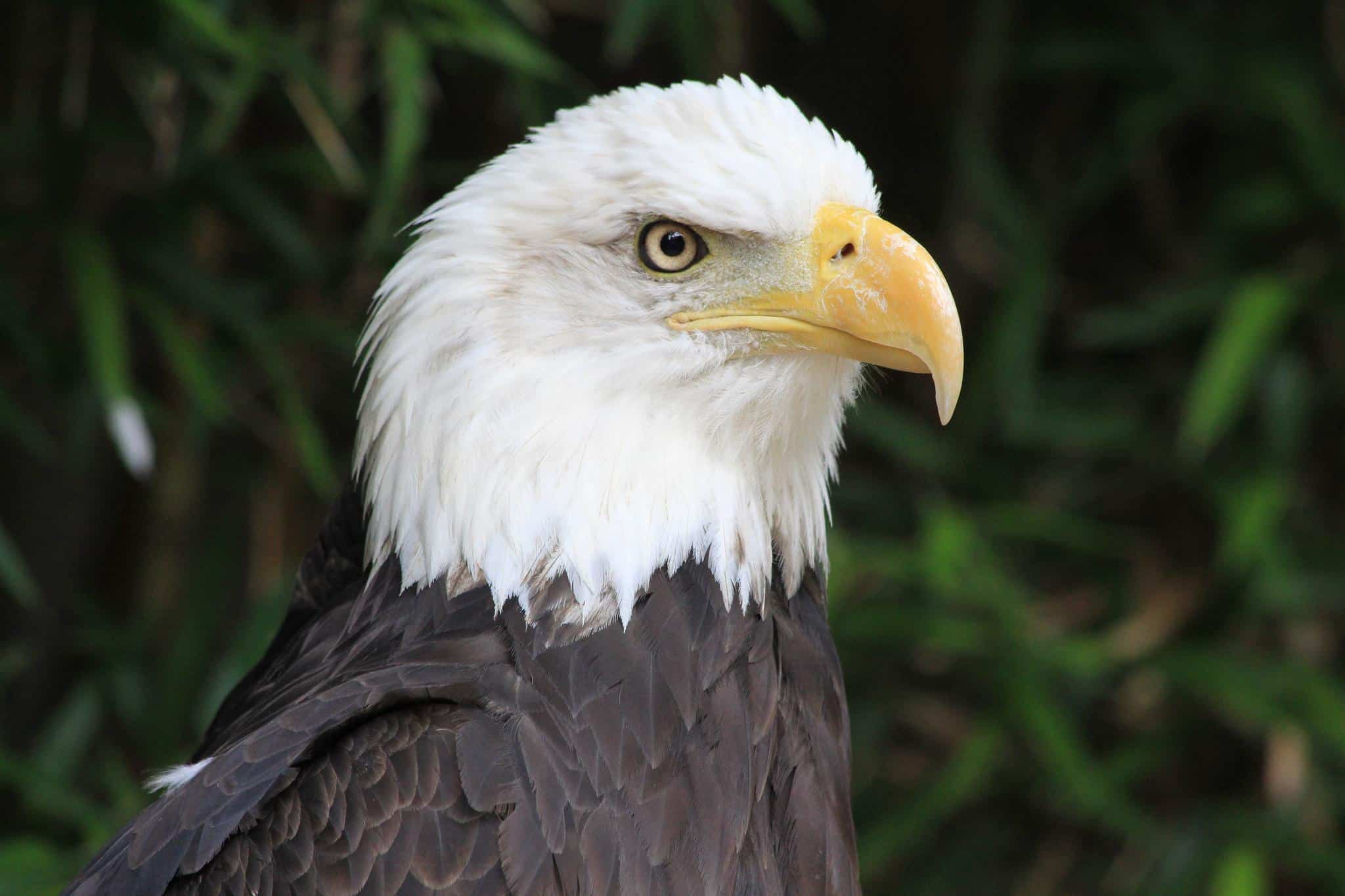
One of the reasons that eagles have such good eyesight is their ability to look both forward and sideways at the same time. This is because their eyes have two foveas (focal points) which allow them to focus in two different directions. Eagles also have a 340° field of vision.
Thank you for reading! Have some feedback for us? Contact the AZ Animals editorial team.

